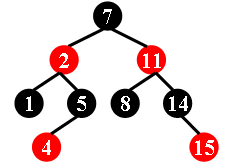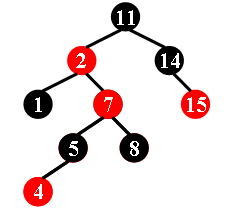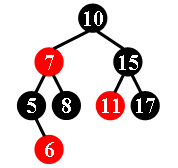红黑树判断
1. 原文
There is a kind of balanced binary search tree named red-black tree in the data structure. It has the following 5 properties:
- (1) Every node is either red or black.
- (2) The root is black.
- (3) Every leaf (NULL) is black.
- (4) If a node is red, then both its children are black.
- (5) For each node, all simple paths from the node to descendant leaves contain the same number of black nodes.
For example, the tree in Figure 1 is a red-black tree, while the ones in Figure 2 and 3 are not.
 |
 |
 |
|---|---|---|
| Figure 1 | Figure 2 | Figure 3 |
For each given binary search tree, you are supposed to tell if it is a legal red-black tree.
Input Specification:
Each input file contains several test cases. The first line gives a positive integer K (≤30) which is the total number of cases. For each case, the first line gives a positive integer N (≤30), the total number of nodes in the binary tree. The second line gives the preorder traversal sequence of the tree. While all the keys in a tree are positive integers, we use negative signs to represent red nodes. All the numbers in a line are separated by a space. The sample input cases correspond to the trees shown in Figure 1, 2 and 3.
output Specification:
For each test case, print in a line “Yes” if the given tree is a red-black tree, or “No” if not.
Sample Input:
1 | 3 |
Sample output:
1 | Yes |
2. 解析
建树
create(int x, node* &root)
根为红,左右结点为黑
if(root->data<0). if(root->lchild->data<0) if(root->rchild->data<0)
左右黑结点数相同
根为黑>0
3. AC代码
1 |
|
建树时,判断为abs(root->data)>abs(x)